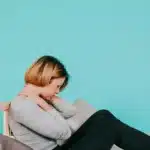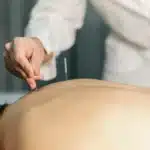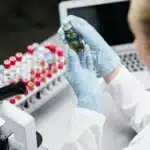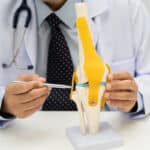
Located in the lower back, this structural component of the body is made up of many different parts that function together to support, strengthen, and allow for flexibility. The lower back is particularly prone to pain, whether it is acute or chronic, for a variety of reasons. Chronic pain is defined as any discomfort that persists for longer than three months and is not relieved by the body’s natural healing mechanisms. Identifying the underlying reasons for chronic lower back pain is critical if you want effective treatment. Before visiting any pain clinic for arthritis, read the article.
Lower Back Pain: The Most Common Causes
Strain and Sprainal Lower back discomfort is most often caused by a strained muscle or ligament or by a combination of the two. Sudden and long-term lower back injuries are both possible with these injuries. A strain occurs when the muscle fibers are strained above their breaking point, resulting in damage to the tissue. Sprains occur when ligaments are torn or overstretched, resulting in tearing or overstretching. The symptoms and therapy are the same regardless of whether there is an injury to ligaments or muscles. Heavy lifting, sports injuries, bad posture, falling, or any twisting of the spine that puts stress on the spine can cause sprains and strains, which can lead to lower back pain and discomfort.
Degenerative Disc Disease – Your intervertebral discs contain water when you are born. This is the best time for them to eat. As you grow older, the hydration in these discs decreases, and they begin to wear out. When this occurs, the discs in this area of the body are less able to withstand stresses than they once were, resulting in tears in the disc wall, pain, and the possibility of herniation. Stenosis can be caused by the disc collapsing, but it can also be the cause of it.
Lumbar Herniated Disc A jelly-like center can be found inside the lumbar disc. This can irritate neighboring nerve roots if it breaks through the disc’s thick outer coating. This is due to the presence of proteins in the herniated disc section that creates inflammation in the nerve roots, resulting in nerve pain. Nerve discomfort can also be caused by compressing the nerve root.
Disease of the Sacroiliac Joint This joint is responsible for transferring weight from one end of the pelvis to another. Its principal function is to cushion the upper and lower body from each other. When a joint becomes inflamed or has too much or too little motion, pain will occur.
Facet Joint Dysfunction – The lumbar spine has two facet joints at the back part of each disc at each segment of motion. There is cartilage between the bones and a capsular ligament with nerves that surrounds the joints in question. Disc pain can occur alone or in conjunction with aching joints.
Spinal Stenosis – Nerve root entrapment due to spinal stenosis produces excruciating back pain because of the narrowing of the spinal canal. You may have central or forminal narrowing, as well as both, in the lower back. This can occur at a single level or numerous levels.
Spinal Arthritis – Osteoarthritis of the spine is caused by the gradual deterioration of the disc and facet joints with age. It can occur at a single level of the lower spine or numerous levels, resulting in discomfort, inflammation, instability, and stenosis. Degenerative joint disease or spondylosis are other names for the condition.
Where to Treat Your Lower Back Pain?
Oklahoma Spine & Pain Management Clinic provides the utmost care to patients who suffer from acute lower back pain. Our pain management clinic has extremely credible doctors who can help you remove the pain permanently.
**Disclaimer: This content should not be considered medical advice and does not imply a doctor-patient relationship.






